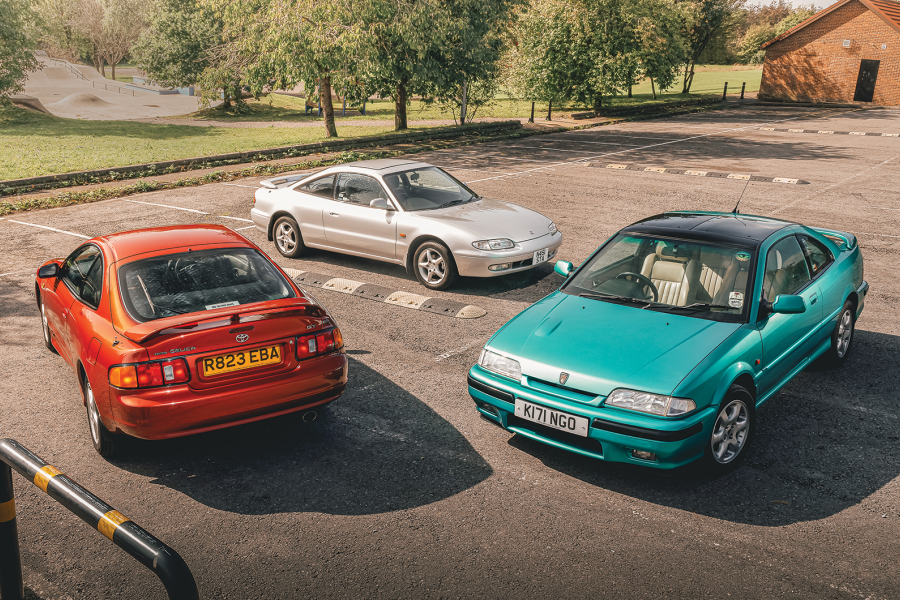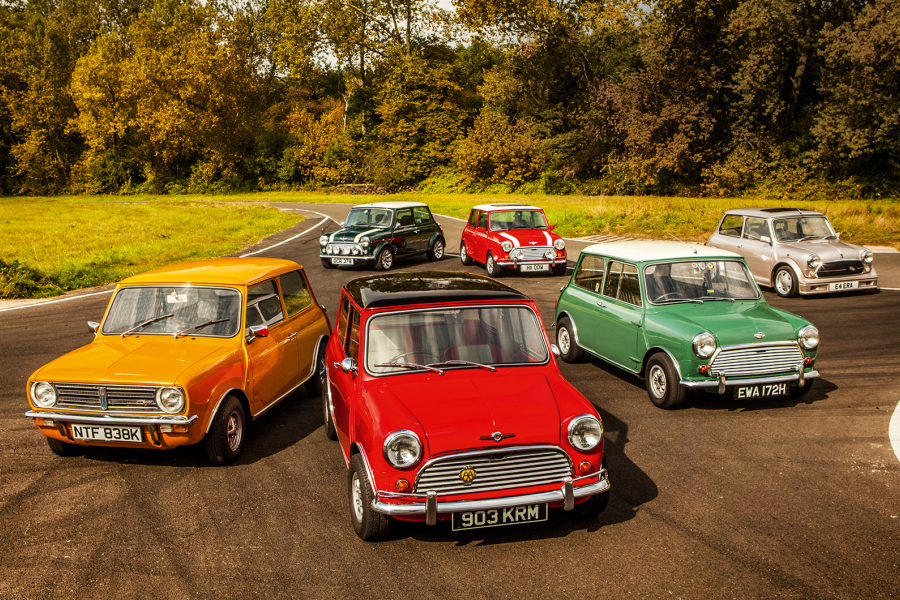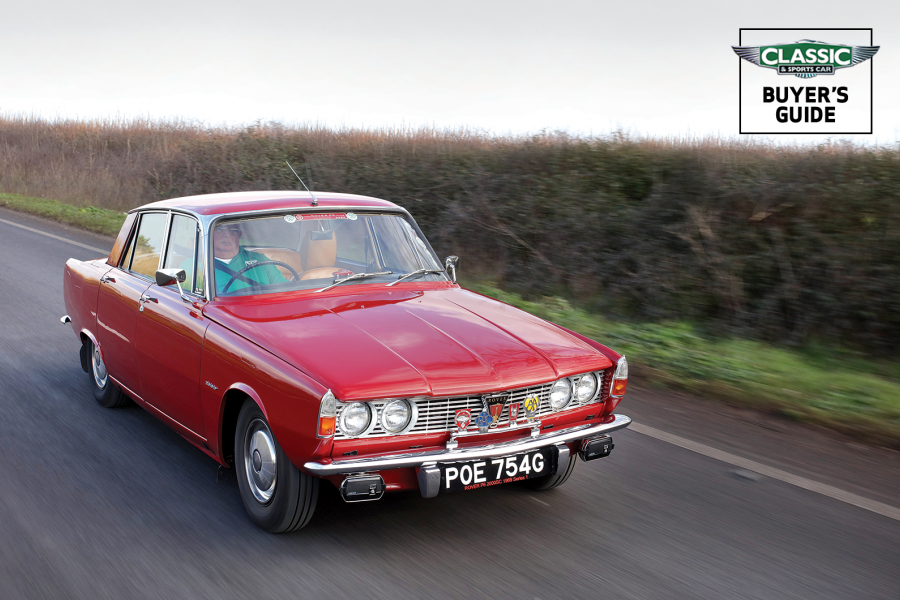The final member of our quartet is one that BL thought perfect for the ambitious barrister or successful company director.
On 2 July 1979, Rover introduced the V8-S, which it claimed illustrated: ‘The difference between the best and the rest.’
In essence, the new flagship was a testbed for the marque’s return to the US market, especially its SU-Butec air-conditioning system.
Furthermore, in the UK it would hopefully lure the well-heeled motorists away from their velour-lined Vauxhall Royales.
“I just like the fact that it’s different, and I like to champion its underdog status.”
Our test car, owned by Tim Spencer, is finished in Midas Gold, with the other colour choices being Platinum Silver, Persian Aqua Blue or Triton Green.
TSL 982 is also unusual in featuring the five-speed manual gearbox, with many customers opting for the Borg-Warner automatic.
Regardless of the transmission, however, the sales brochures proclaimed: ‘We set out to create an exclusive member of the Rover stable that would offer you the perfect marriage of unique style and motoring luxury.’
The mid-range 2600 has a 2.6-litre ‘six’ (left); the V8-S had no mechanical changes from the 3500
In other words, the owner could boast of the deep-pile carpets, the headlamp washers and wipers, the sliding roof and, unlike the cheaper Rovers, an enamelled Viking badge.
The alloy wheels alerted motorists to the presence of an exclusive SD1, one that looked down on any Opel Senator.
The interior is a special delight, leaving the occupants feeling as though they have been encased in luxury.
If the raison d’être of the Volvo 264 GLE was dignity, then the V8-S seemed to revel in conspicuous consumption.
“In the late 1970s, many enthusiasts preferred the combination of the 2597cc unit and the manual gearbox to the 3500, because they found the 2600 to be more of a sports saloon”
‘Rover has achieved the standard of finish which the excellence of the basic design deserves,’ concluded Motor.
The five-door layout was not always a sales advantage in a very conservative market sector, but BL only ever intended the V8-S to be a limited-production vehicle.
Just 1040 examples left the factory before it was succeeded by the 3500 Vanden Plas in September 1980, with TSL 982 having been built in the very first week of manufacture.
This Rover V8-S is believed to be the oldest in the UK
The Rover SD1 Club believes Spencer’s car to be the oldest V8-S in the UK. It originally served as a demonstrator for Mylchreests Motors in Douglas on the Isle of Man.
When Spencer acquired it in August 1997, the Rover resided in Loughborough in a somewhat dilapidated state, and his first tasks were to tidy the bodywork and find missing trim items.
Today, the gold SD1 looks resplendent and every inch a conveyance that screams ‘the difference between the best and the rest’.
The rare V8-S of Tim Spencer looks the business with its gold alloy wheels
Spencer regards the SD1 as more suited to cruising than sporting motoring, even as a V8-S, and finds the manual ’box ideal for motorway travel.
Even if this exclusive model is now overshadowed in the public memory by the Vitesse, its importance in further raising the marque’s profile cannot be overstated.
Leyland facelifted the range in 1982, and production of the Series 2 ceased in 1986.
The cabin of the V8-S is marginally better appointed than the 3500, but wows with velvet seat covers and deep, shag-pile carpeting
This quartet not only resembles the forecourt of a prosperous dealership at the end of the ’70s, but also demonstrates why the new Rover held such promise.
For too many years the SD1 family was viewed almost solely within the context of the British Leyland story, but a new generation of enthusiasts respects them on their own terms.
This Rover V8-S has the rarely specified five-speed manual gearbox
As memories of Panorama footage of picket lines fade, along with the BL jokes that ceased to be remotely amusing circa 1997, the SD1 is now regarded as ambitious, sometimes flawed, but never dull.
While certain cars have absence, this Rover has presence and, in many respects, it was indeed ‘Tomorrow’s Car Today’.
Images: John Bradshaw
Thanks to the British Motor Museum; the Rover SD1 Club
Factfiles
Rover 3500
- Sold/no built 1976-’86/107,916
- Construction steel monocoque
- Engine all-alloy, ohv 3528cc V8, twin SU carburettors
- Max power 155bhp @ 5250rpm
- Max torque 198lb ft @ 2500rpm
- Transmission three-speed automatic, RWD
- Suspension: front independent, by MacPherson struts, anti-roll bar rear live axle, coil springs, semi-trailing arms, self-actuating ride-levelling units
- Steering rack and pinion
- Brakes discs front, drums rear, with servo
- Length 15ft 5in (4698mm)
- Width 5ft 9½in (1768mm)
- Height 4ft 5½in (1354mm)
- Wheelbase 9ft 3¾in (2814mm)
- Weight 3006lb (1363kg)
- Mpg 23.6
- 0-60mph 9 secs
- Top speed 123mph
- Price new £4750
- Price now £5-12,000*
Rover 2300 (Where different to 3500)
- Sold/no built 1977-’86/42,996
- Engine iron-block, alloy-head, ohc 2350cc straight-six, twin SU carbs
- Max power 123bhp @ 5000rpm
- Max torque 134lb ft @ 4000rpm
- Transmission four-speed manual
- Suspension: rear live axle, variable-rate coil springs, telescopic dampers
- Weight 2899lb (1315kg)
- 0-60mph 11.5 secs
- Top speed 114mph
- Mpg 25.4
- Price new £5342
- Price now £4-8000*
Rover 2600 (Where different to 3500)
- Sold/no built 1977-’86/108,572
- Engine iron-block, alloy-head, ohc 2597cc straight-six, twin SU carbs
- Transmission five-speed manual
- Max power 136bhp @ 5000rpm
- Max torque 152lb ft @ 3750rpm
- Weight 2978lb (1351kg)
- 0-60mph 10.7 secs
- Top speed 118mph
- Mpg 26
- Price new £5800
- Price now £5-10,000*
Rover V8-S (Where different to 3500)
- Sold/number built 1979/1040
- Transmission five-speed manual
- Height 4ft 6½in (1382mm)
- Weight 3165lb (1436kg)
- 0-60mph 9.7 secs
- Price new £10,699
- Price now £8-12,500*
*Prices correct at date of original publication
READ MORE
Vauxhall Royale: Luton’s classiest coupé?
Saloon bar brawn: Rover P6 3500S vs Triumph 2.5 PI MkII
King of the hill: driving the Range Rover CSK
Andrew Roberts
Andrew is a long-time contributor to Classic & Sports Car





























